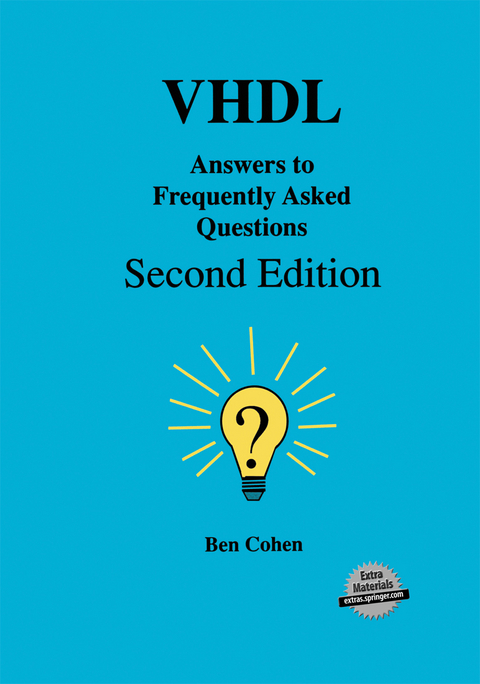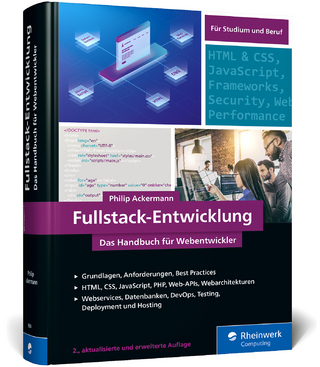
VHDL Answers to Frequently Asked Questions
Springer (Verlag)
978-0-7923-8115-0 (ISBN)
1. Language Elements.- 1.1 Why VHDL for Digital Designs.- 1.2 Salient Points of Concurrent Statements.- 1.3 Guarded Signal Assignments.- 1.4 Signals and Ports.- 1.5 Configurations.- 1.6 Arithmetic Issues and Operators.- 1.7 PACKAGE STD_LOGIC_1164.- 1.8 Range Constraint in Type Definition.- 1.9 Shared Variables.- 2. Arrays.- 2.1 Array Structure Representations.- 2.2 Arrays — Legal Operations.- 2.3 Array Slices and Ranges.- 2.4 Array Initialization.- 2.5 Constant Arrays in Case.- 2.6 Constrained and Unconstrained Arrays.- 2.7 Mapping Arrays of Different Sizes.- 2.8 Unconstrained Aggregate with “Others ”.- 2.9 Illegal Array Types.- 3. Drivers.- 3.1 Multiple Drivers — Case 1.- 3.2 Multiple Drivers — Case 2.- 3.3 Multiple Drivers Error — Case 3.- 3.4 Multiple Drivers Error — Component.- 3.5 Coding Style for Detection of Multiple Drivers.- 4. Subprograms.- 4.1 Side Effects From A Procedure.- 4.2 Garbage Collection of Dynamically Created Objects.- 4.3 Acceptable Types in Parameter Lists for Function Calls.- 4.4 Files Declarations in Procedures.- 4.5 Multiple Accesses of Same File.- 4.6 File Array.- 4.7 Conversion Function From Integer To Time.- 4.8 Normalization In Subprograms.- 5. Packages.- 5.1 Converting Typed Objects To Strings.- 5.2 Printing Objects From Vhdl.- 5.3 Multiple Input Signature Register (Misr).- 5.4 Design of a Linear Feedback Shift Register (Lfsr).- 5.5 Random Number Generation.- 5.6 Deferred Constant in Package Declaration.- 5.7 Complex Numbers and Overloaded Operators.- 5.8 Ieee Standards.- 6. Models.- 6.1 Large Ram Model For Simulation..- 6.2 Zero Ohm Resistor (Wire, Bridge) Model.- 6.3 Error Injector Model.- 6.4 Transfer Gate (Switch).- 7. Synthesis.- 7.1 Supported/Unsupported Constructs for Synthesis.- 7.2 Synthesis Sensitivity Rules.- 7.3Latch/Register/Combinational Logic.- 7.4 Latch Inferrance in Functions.- 7.5 Variable Initialization and Lifetime.- 7.6 Wait Statement.- 7.7 Defining Shift Registers in Synthesis.- 7.8 Register File.- 7.9 Multiplexer Model.- 7.10 Demultiplexer Model.- 7.11 Barrel Shifter.- 7.12 Use of “don’t Care” in Case Statement.- 7.13 Parameterized Priority Encoder.- 7.14 Generating A Synchronous Precharge.- 7.15 Technology and Vhdl Code Design.- 7.16 Synthesizing Tri-States.- 7.17 Subelement Association.- 7.18 Finite State Machine (Fsm).- 7.19 One-Hot Encoding.- 7.20 Instantiating Synopsys® Designware Components.- 7.21 Resource Sharing.- 7.22 Applying Digital Design Experiences.- 7.23 Address Range Identification Via Inferred Comparator.- 7.24 Port Mapping to Ground Or Vcc.- 7.25 Bit Reversal.- 7.26 How to Design a Timer in Vhdl.- 7.27 Specifying a Multiplier.- 7.28 Behavioral Synthesis.- 8. Design Verification and Testbench.- 8.1 Verification Processes.- 8.2 Functional Verification.- 8.3 Regression Tests.- 8.4 Formal Verification.- 8.5 Bus Functional Model (Bfm) Modeling.- 8.6 Application of Misr, Random, Lfsr Packages for Auto-Regression.- 8.7 Strength Stripper.- 9. Potpourri.- 9.1 Methods To Enhance Simulation Speed.- 9.2 Accessing Signals Internal to Components.- 9.3 Transferring a Line Onto a Signal.- 9.4 Type Declaration in Multiple Packages.- 9.5 Internet - Frequently Asked Questions.- 9.6 Vhdl Text Editor?.- 9.7 Vital.- 9.8 Behavioral Modeling.- 9.9 Final Vhdl Exam.- 10. Design for Reuse.- 10.1 Design Processes for Reusability.- 10.2 Parameterized, Reusable and Readable Code.- 10.3 Documentation of Vhdl Designs.- Appendix A: Vhdl’93 and Vhdl’87 Syntax Summary.- Appendix B: Package Standard.- Appendix C: Package Textio.- Appendix D: Package Std_Logic_1164.-Appendix E: Package Std_Logic_Arith.- Appendix F: Vhdl Predefined Attributes.
| Zusatzinfo | XXIX, 384 p. |
|---|---|
| Verlagsort | Dordrecht |
| Sprache | englisch |
| Maße | 178 x 254 mm |
| Themenwelt | Mathematik / Informatik ► Informatik ► Programmiersprachen / -werkzeuge |
| Mathematik / Informatik ► Informatik ► Theorie / Studium | |
| Technik ► Elektrotechnik / Energietechnik | |
| ISBN-10 | 0-7923-8115-7 / 0792381157 |
| ISBN-13 | 978-0-7923-8115-0 / 9780792381150 |
| Zustand | Neuware |
| Haben Sie eine Frage zum Produkt? |
aus dem Bereich


